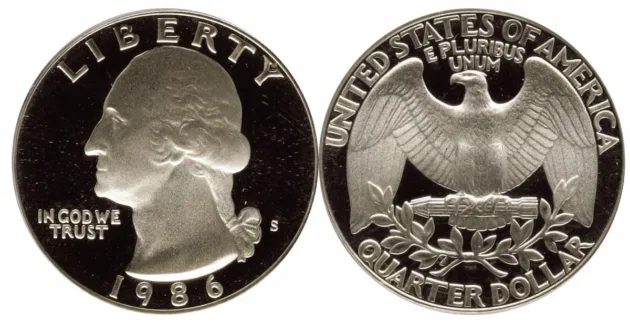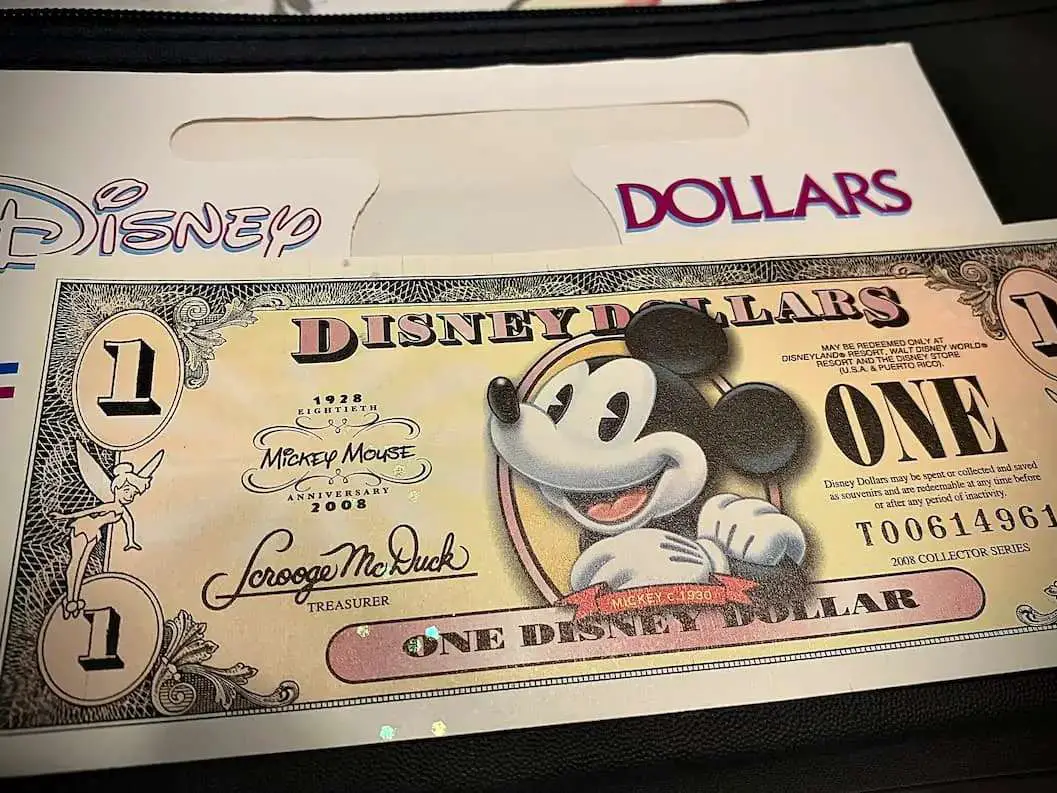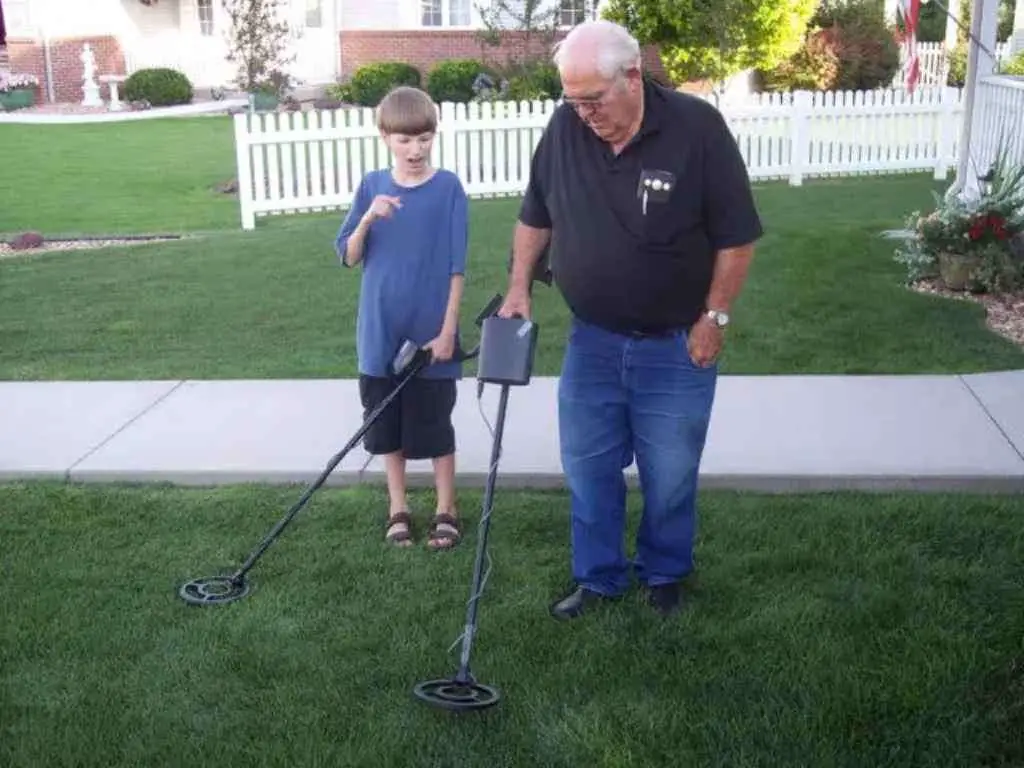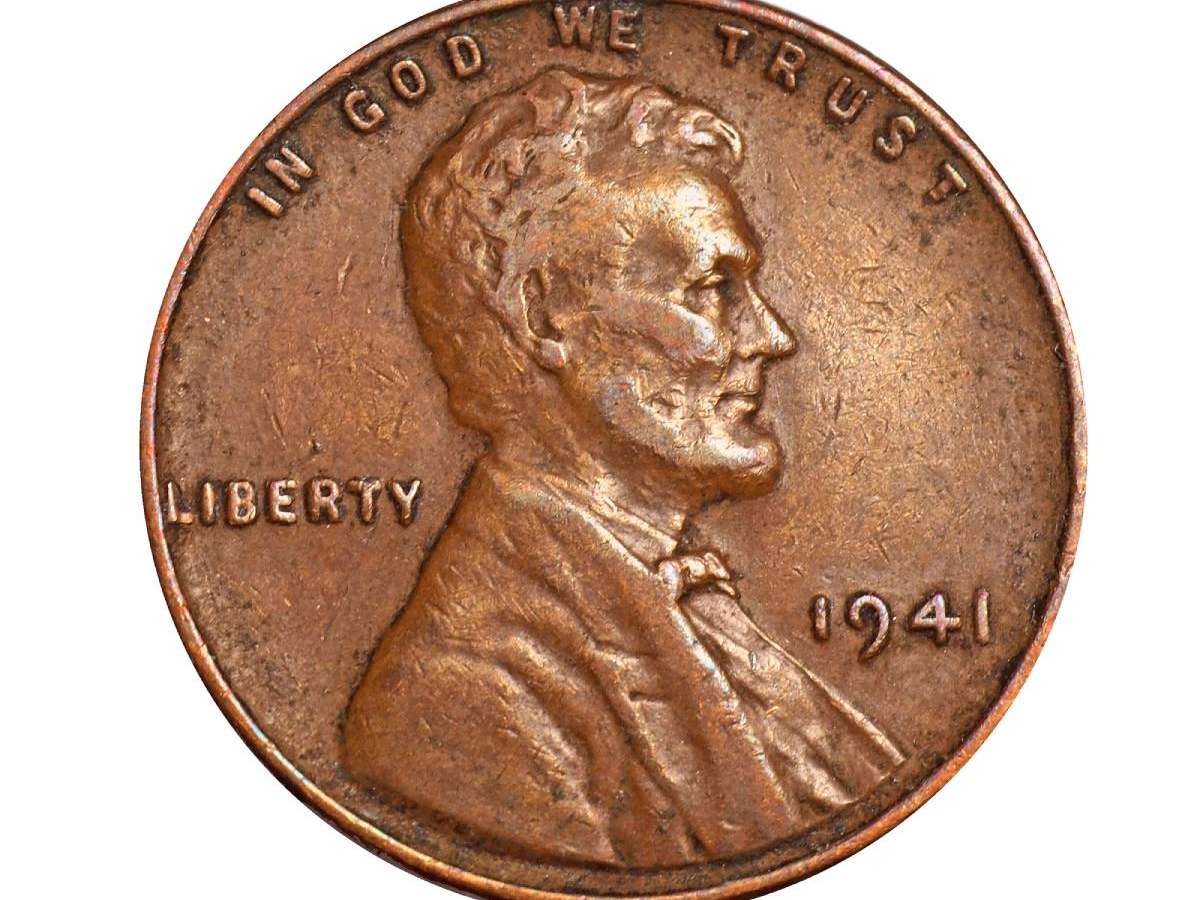Did you know there are some 1986 quarters worth more than 25 cents?
You might be surprised to find out that some of the most valuable clad quarters were actually struck in 1986!
Why are some 1986 quarter values so high?
And how can you tell if you have a 1986 quarter worth saving?
In this article, you will find the value of all 1986 quarters — and learn why some of them are worth so much money.
Fun Facts About 1986 Quarters
The Washington quarter was originally designed in 1932 by John Flanagan. On the obverse (“heads side”) of the 1986 quarter is a portrait of Revolutionary War general and first United States president George Washington. On the reverse (“tails side”) is a heraldic eagle.

Where is the mintmark on a 1986 quarter?
On all 1986 quarters, you will find the mint letter stamp (or mintmark) on the obverse — at the lower-right side of the coin. The mintmark appears just behind (or to the right of) the bow in Washington’s ponytail.
Some people are looking for no mintmark 1986 quarters, but all 1986 quarters are supposed to have a mintmark.
There are 3 kinds of mintmarks on 1986 quarters. They include:
- “P” mintmark indicating the coin was struck at the Philadelphia Mint
- “D” mintmark means the coin was made at the Denver Mint
- “S” mintmark symbolizes the coin was created at the San Francisco Mint
Sometimes collectors report seeing what they think is a different kind of mint letter stamp. In most cases, this is just the misshapen appearance of a regular mintmark with dislodged or missing metal caused by wear or post-mint damage.
Is there a 1986 silver quarter worth looking for?
Many people want to know about rare 1986 silver quarter values.
Unfortunately, there are no 1986 silver quarters. Nor are there any known 1986 silver quarter errors.
All 1986 Washington quarters were struck in a copper-nickel clad format.
How much does a 1986 quarter weigh?
The standard weight of a 1986 quarter is 5.67 grams.
However, there’s a legal tolerance of .227 grams — more or less. So, it’s perfectly acceptable for a clad quarter to weigh as much as 5.9 grams or as little as 5.44 grams. In fact, a heavily worn 1986 quarter could weigh even less due to loss of metal through wear.
These are the best scales for weighing U.S. coins. (Another helpful tool for inspecting your coins more closely is a high-quality coin magnifier.)
Is a 1986 quarter rare?
The United States Mint struck more than 1 billion Washington quarters in 1986. That’s a lot of quarters!
In retrospect, that suggests 1986 quarters aren’t really all that rare at all. In fact, they’re categorically common.
However, well-preserved 1986 quarters and those with errors and varieties do sell at higher premiums.
How Much Is A 1986 Quarter Worth?
Now, let’s see which 1986 quarters are worth more than face value…
1986-P Quarter Value
The 1986-P quarter was struck at the Philadelphia Mint, which struck 551,199,333 of the coins that year. As they’re so common and contain no precious metal, they’re worth their face value of 25 cents in worn condition.
Typical uncirculated examples are worth more like $1 to $3.
The most valuable 1986-P quarter was graded Mint State-67 by Professional Coin Grading Service and sold for $2,880 in 2019.
1986-D Quarter Value
The 1986-D quarter was struck to the tune of 504,298,660 pieces at the Denver Mint. Now, while this may sound like a big number — and it is — the 1986-D quarters can command a small premium in lightly worn condition.
A lightly circulated 1986-D quarter can sell for as much as 50 cents, while uncirculated 1986-D quarters are usually worth about $4.
Some of the reasons the 1986-D quarter values are a little higher than normal have to do with the relatively small number of 1986 mint sets sold.
Also, for whatever reason, fewer 1986-D quarter rolls and bags were saved — leaving fewer uncirculated and lightly circulated examples for collectors today.
The most valuable 1986-D quarter was graded Mint State-67 by Professional Coin Grading Service and fetched $900 in 2010.
1986-S Quarter Value
You might have a difficult time finding any 1986-S quarters in your pocket change. This is because the San Francisco Mint struck only 3,010,487 of them — and they were all distributed in 1986 proof sets.
The 1986 proof quarter was struck using highly polished planchets (finished blanks) by specially prepared dies on high-tonnage presses. The proof manufacturing process, in which a coin is usually struck at least twice to help bring up all details, creates a coin of super-high quality and pleasing appearance.
The 1986-S quarter value ranges from about $3 to $5, on average.
The most valuable 1986-S quarter was graded Proof-70 Deep Cameo by Professional Coin Grading Service and commanded $552 in a 2003 auction.
IMPORTANT: What Is The Grade Of Your 1986 Quarter?
To determine the true value of your 1986 quarter, you first need to know what condition (or grade) your coin is in.
So, grab a coin loupe and a copy of the U.S. Coin Grading Standards book. Then, watch this video to see how to grade coins yourself at home:
These are the best coin grading apps that make grading coins yourself much easier!
Rare 1986 Quarter Errors To Look For
Some of the most valuable 1986 quarters are those with imperfections and unintentional oddities.
The following 1986 error and variety quarters are worth good money, and could be found in everyday pocket change (with a little luck):
1986 Quarter That Has Doubled Images Or Doubled Letters
There aren’t any major 1986 doubled die quarters worth tons of money, but there are some more obscure ones that may fetch anywhere from $20 to $50 apiece.
The best places to look for doubled dies on Washington quarters is in and around the lettering, the eye of George Washington, and the feathers and other details on the eagle.
1986 Quarter That Looks Off-Center
One of the more dramatic errors is the off-center strike — which could show anywhere from 1% to 99% of the design missing. This is caused by the planchet not being perfectly squared between the dies.
While off-center quarters that are 1% or 2% off are rather common, values go up for coins that are 5% to 10% off center or more. Such a piece can trade for $25 to $50. The most valuable kind of off-center 1986 quarter would be about 50% off center yet still show a complete date. A piece like that could take more than $200.
1986 Quarter Without Ridges On The Edge
Many folks report finding old quarters without ridges on the edge or a smooth edge.
In most cases, this is caused by excessive edge wear that could be traced back to use in vending machines and the like. Those types of no ridges on edge quarters are worth only their face value.
However, there is a kind of quarter error that also involves a smooth edge — the broadstrike. This is caused when the retaining collar that imparts the ridges (or reeds) on the edge of the quarter when the coin is struck fails to deploy.
A broadstrike quarter is wider and thinner than normal, but is of the correct weight. A 1986 broadstrike quarter can be worth $20 to $30… possibly even more.
READ NEXT: A List Of All The Most Valuable Quarters (Silver & Rare Ones)
I’m the Coin Editor here at TheFunTimesGuide. My love for coins began when I was 11 years old. I primarily collect and study U.S. coins produced during the 20th century.
I’m a member of the American Numismatic Association (ANA) and the Numismatic Literary Guild (NLG) and have won multiple awards from the NLG for my work as a coin journalist. I’m also the editor at the Florida United Numismatists Club (FUN Topics magazine), and author of Images of America: The United States Mint in Philadelphia (a book that explores the colorful history of the Philadelphia Mint). I’ve contributed hundreds of articles for various coin publications including COINage, The Numismatist, Numismatic News, Coin Dealer Newsletter, Coin Values, and CoinWeek.
I’ve authored nearly 1,000 articles here at The Fun Times Guide to Coins (many of them with over 50K shares), and I welcome your coin questions in the comments below!





